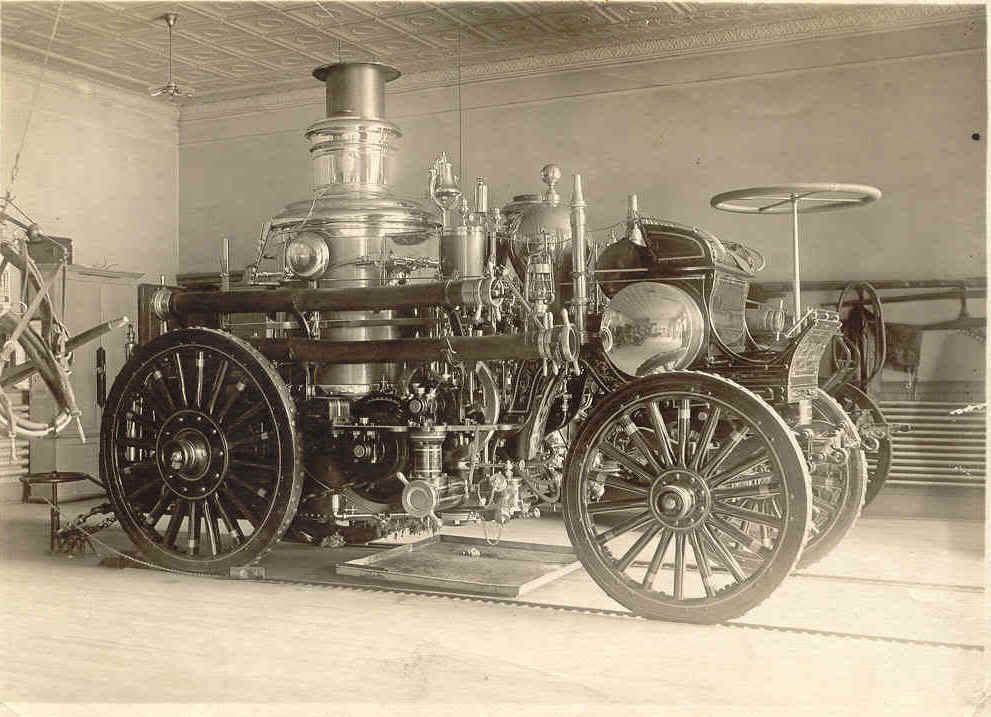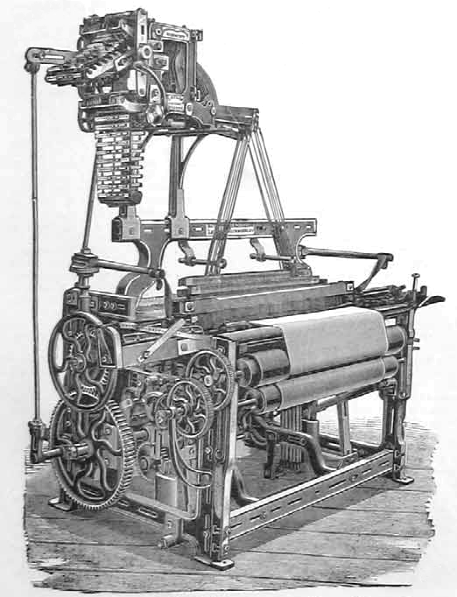The mother of consumerism, which began in late 18th century, early 20th century. It was a period where rural societies in Europe and America became industrial and urban, which began offering manufacturing, that was often done in people's homes, using hand tools or basic machinery. The industrial revolution marked a transition from hand tools to powered machinery, factories, and mass production. The birthplace was Britain, and iron and textiles industries, together with the development of the steam engine flourished, playing important roles in the cities which started developing into urban cities.
It was a splendid milestone for people, but also had bad factors which contributed to this. People were sold for slavery, with tragic conditions as to create mass production which was made from coal, thus that was the most crucial material needed to keep the steam engines going.
 |
| 2015. . [ONLINE] Available at:http://www.saburchill.com/history/chapters/IR/images/091107012.jpg. [Accessed 02 March 2015].
This machine was so important that it replaced workers as it was splendid in production quality. This resulted in Luddite riots who protested against the changes produced by the whole revolution.In 1811, the Luddite movement started spreading though England where they met at night on the rivers surrounding the industrial towns, practicing drills and maneuvers. Many people were object to death threats and attacks by King Ludd and his supporters. The riots ended after the murder of William Horsfall by three Luddities.
|
 |
| 2015. . [ONLINE] Available at:http://upload.wikimedia.org/wikipedia/commons/9/9d/Interior_of_Magnolia_Cotton_Mills_spinning_room._See_the_little_ones_scattered_through_the_mill._All_work._Magnolia..._-_NARA_-_523307.jpg. [Accessed 02 March 2015].
Products made with mills were cheaper to the consumer, thus it demanded more production. In 1813, Francis Cabot Cowell
set up the first american textile factory and combined tasks that were needed to get finished cotton from raw cotton.
A new spinning machine was created by Englishman James Hargreaves that was named "Spinning Jenny", and it enabled up to eight
threads to be processed at once with multiple spinning wheels.
The weaving cloth was born by English inventor Edmund Cartwright (1743 - 1823), who invented the power loom, that was
developed in the 1780s. Another innovation for the improvement of the looms, was the "Flying Shuttle" invented by John Kay in 1733.
This enabled weavers to weave faster by ontaining a bobbin on to which the weft yarn was wound. In 1753, his home was attacked
by the textile workers, in response to his invention which left them out of work.
We see how much steam engines were of an importance in the period as they were the main drivers of almost every machinery
invented. The first commercial steam engine appeared in 1698, which Thomas Newcomen improved in 1712. Wasted heat and fuel
were improved by James Watt, by improving Newcomen's engines in 1760s, and achieved in 1785, by using heat more efficiently with less fuel.
The most crucial sources in the revolution were coal and iron, where coal was used to power the steam engines and to make iron. Iron was to
improve machine and tools, also to build ships and bridges. At the time, most manufacturers were using charcoal to smelt iron, and that is why
Abraham Darby developed "coke" to do this instead, which was said to be weaker than charcoal they had been using. It was around 1750 when
his son created a process that made coke easier, which was a popular choice by 1760.
When a revolution like this occurs, people's lives get affected, and it was drastic in this time where two classes that benefited were the middle
and upper ones. They consisted of people that had wealth and success. Even though people afforded products any way, prices were being
lowered even more, as to give more approach of enjoyment of the new products being made to the ones not affording them.
The larger the revolution became, the more powerful the businessmen and professionals became. Education started elevating, where even rules
for compulsory schools to kids occured. There was a sudden need for education due to factories that needed workers to build goods.
The working class was not well during the period as many were replaced by machines in factories, but many also gained new jobs with machinery.
Most workers worked with low wages due to their lack of capability in producing products, and that is why schools were important to let these people
learn too, not only the upper class which afforded tutors. People moved from villages to the cities looking for work, so it affected people's lifestyle too.
This revolution couldn't grow without transportation of raw materials and finished products over long distances so 3 main types of transportation that
increased were waterways, roads and railways. It was crucial because people were living in the West and transportation via water was the cheapest
method to more heavy products. So as to do so, canals were widened and deepened allowing more boats to pass so as to increase production
processes. The first steam-powered steamboat was demonstrated by Robert Fulon in 1807, with its use going from NYC to Albany in Hudson River.
It was able to carry raw materials across Atlantic Ocean by mid 1800s. Roads improved with a high level as people before had to travel using foot.
While ships were making an introduction, steam locomotives were also coming into good use where in early 1800s, Richard Trevithick (1771 - 1833)
constructed the first railway steam locomotive. This lead to offer regular passenger services in 1830 by England's Liverpool and Manchester Railway.
In 1709, Abraham Darby developed a method of producing iron in a blast furnace fuelled by coke rather than charcoal. Blast Furnaces allowed iron to be
produced from a mixture of iron ore, coke and limestone, which made iron widely available.
The seed drill was invented by Jethro Tull in 1701, which was a machine driven by horses and improved ploughing drastically in agricultural world.
This drill would sow seed in uniform rows and over up seed in the rows. Before this invention, sowing seeds was done by scattering seeds on ground.
Tull decided to invent the drill as he thought it was wasteful to sow seeds that way as many seeds didn't take root.
Noticed in the Industrial Revolution is how goods were being produced for products of needs with functionality rather than for entertainment and
ornament purposes. It was Josiah Wedgwood who started the Wedgwood Company that started producing goods for wants rather than needs.
This consisted of pottery that had the purpose of enjoyment and decorating. He commissioned artists such as John Haxman to create ceramic
designs for his company. He also supplied the Queen with a dinner set as he afterwards was named as her official potter. His works were of high
standard and were hard crafted.
In the Industrial Revolution we also see the birth of banks as a result of capital, after seeing that companies can profit and result merchants,
retail merchants, farmers, wholesales and others that wanted to invest. The money at the time was given to buy new equipment or improve
them which expand factories rather then directly investing in the industries and factories.
The first stock exchange was founded in early 1790s and in 1770s being in London and New York respectively.
The 19th Century was an era of innovations and revivals which resulted in what became known as "pictureesque". By mid 19th Century London,
built the world's first underground railways and first photograph. Prior to the revolution, buildings were affected as building materials before were
restricted to few man made materials. Due to bulk iron and variety, architecture relied on strength to hold the buildings. The new materials were
not just used for the skeletons of the building, but also as the facade for example the Crystal Palace and Eiffel Tower. The style complimented
References:
History Network - HISTORY.com. 2015. Industrial Revolution - Facts & Summary - HISTORY.com. [ONLINE] Available at:http://www.history.com/topics/industrial-revolution. [Accessed 02 March 2015].
Eli Whitney ::. 2015. Industrial Revolution - Textile Industry. [ONLINE] Available at:http://www.industrialrevolutionresearch.com/industrial_revolution_textile_industry.php. [Accessed 02 March 2015].
dev/fort/ ::. 2015. Luddite riots in textiles. [ONLINE] Available at:http://historymesh.com/event/luddite-riots/?story=textiles. [Accessed 02 March 2015].
Mary Bellis ::. 2015. Flying Shuttle - John Kay. [ONLINE] Available at: http://inventors.about.com/library/inventors/blflyingshuttle.htm. [Accessed 02 March 2015].
Eli Whitney :: 2015. Industrial Revolution - Steam Engines. [ONLINE] Available at:http://www.industrialrevolutionresearch.com/industrial_revolution_steam_engine.php. [Accessed 02 March 2015].
Elli Whitney :: 2015. Industrial Revolution - Classes of People. [ONLINE] Available at:http://www.industrialrevolutionresearch.com/industrial_revolution_classes_of_people.php. [Accessed 02 March 2015].
Out of the Box Child :: 2015. How the Industrial Revolution Changed Education. [ONLINE] Available at:http://www.outoftheboxchild.com/industrial_revolution.html. [Accessed 02 March 2015].
Eli Whitney ::. 2015. Industrial Revolution - Transportation. [ONLINE] Available at:http://www.industrialrevolutionresearch.com/industrial_revolution_transportation.php. [Accessed 02 March 2015].
UK Parliament .:: 2015. The Industrial Revolution - UK Parliament . [ONLINE] Available at:http://www.parliament.uk/business/publications/parliamentary-archives/archives-highlights/industrial-revolution/. [Accessed 02 March 2015].
About::. 2015. Jethro Tull. [ONLINE] Available at:http://inventors.about.com/library/inventors/bljethrotull.htm. [Accessed 02 March 2015].
Industrial Revolution - Banks. 2015. Industrial Revolution - Banks. [ONLINE] Available at:http://www.industrialrevolutionresearch.com/industrial_revolution_bank.php. [Accessed 02 March 2015].
Building Design/Architecture - The Industrial Revolution—new Materials - Iron, Steel, Strength, and Cast - JRank Articles . 2015. Building Design/Architecture - The Industrial Revolution—new Materials - Iron, Steel, Strength, and Cast - JRank Articles . [ONLINE] Available at:http://science.jrank.org/pages/1073/Building-Design-Architecture-Industrial-Revolution-new-materials.html. [Accessed 02 March 2015].
|







No comments:
Post a Comment